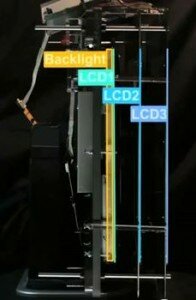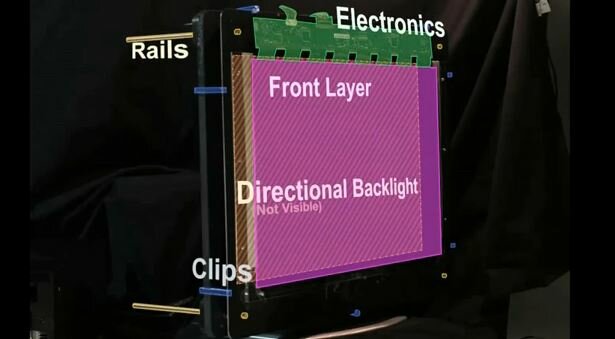MIT Labs prove concept of ‘look around’ glasses free 3D TV
It is believed by many that, in order for 3D television to truly take off, the glasses have to go, so many companies around the globe are in the pursuit of this ultimate goal including MIT Media Labs who have taken a multi-layered approach.
Glasses free 3D displays already exist, often based around lenticular technology. Stips of lenses ‘curve’ the light into different directions so each eye sees a different image, creating the 3D effect. The issue with lenticular screens are low resolutions (although this can be improved with 4K and 8K panels) and viewing cones causing the 3D effect to be dropped if the viewer moves his or her head.
 True holographic television will allow the viewer to see 3D without glasses and see multiple angles when looking around an object for more than one person. The MIT Media Lab’s Camera Culture group have made progress to this ultimate goal using regular LCD technology.
True holographic television will allow the viewer to see 3D without glasses and see multiple angles when looking around an object for more than one person. The MIT Media Lab’s Camera Culture group have made progress to this ultimate goal using regular LCD technology.
According to the research paper, the Media Lab system uses several layers of liquid crystal displays illuminated by a uniform backlight. For a convincing effect, the panels need to refresh at a speed of 360 times per second. The current highest rate is 240 hertz so 360 hertz is not unimaginable. Each image shows a different perspective and the high speed display panels show a series of frames that the viewer’s eyes adds up together creating a single coherent image. It is processor intensive but graphics chips have become so fast in the past five years that complex computational problems can be solved in the time it takes one frame of video.
MIT have been working on the creation of natural 3D images through a multiple layer approach for a while. Increasing the layers increases the sharpness and contrast although that would also increase the size of the display. The quality is almost the same as still holograms and multiple viewers can look around the scene both vertically and horizontally.
The below video offers more information and you can read more about the science behind the technology here
FREE WEEKLY 3D NEWS BULLETIN –




















